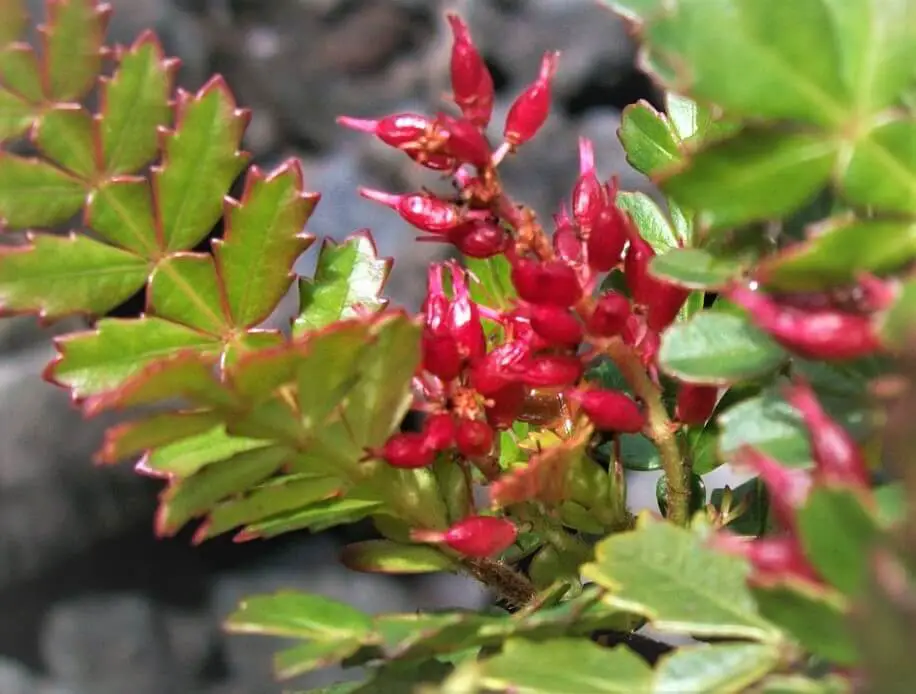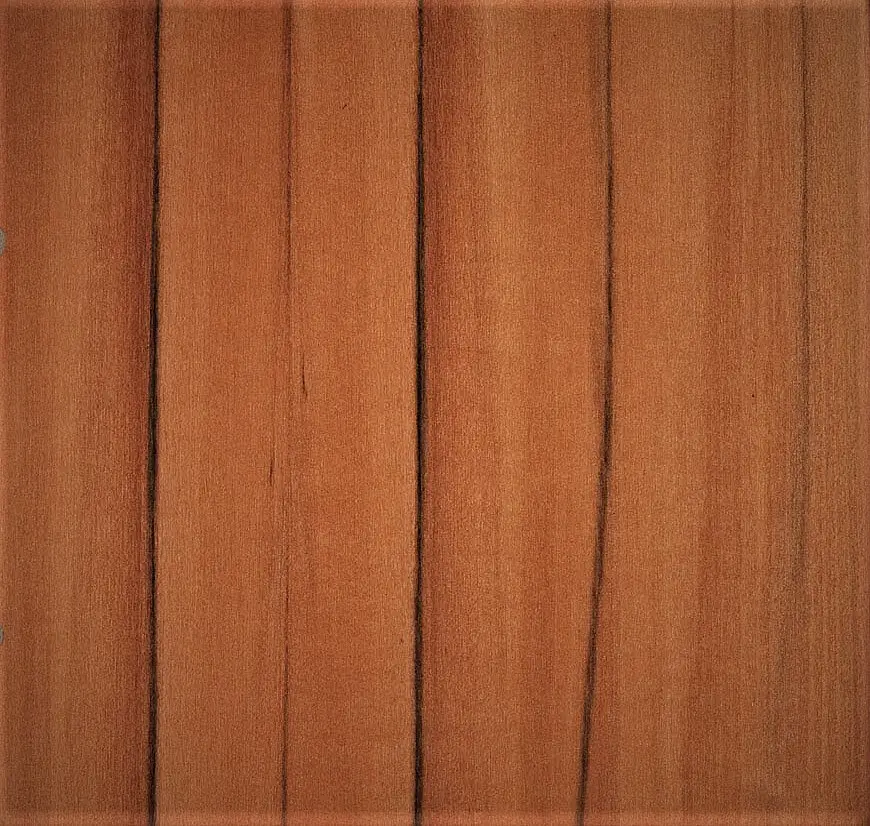Tineo Wood, which has the scientific name Weinmannia trichosperma, is a tree in the Cunoniaceae family. Its scientific name is Weinmannia trichosperma.
It can grow to be forty meters tall. It has a straight trunk almost two meters in diameter at its widest point. The gray bark that covers it is used to make tannin and wool dye.
The Indian apple tree is another name for Tineo. This is strange because the evergreen tree usually grows in South America (Chile, Argentina). It’s not an apple tree, either.
The wood ranges from pink to reddish brown, with thin dark lines running through it. The grain is fine and can be turned, carved, and polished into beautiful shapes.
This tree’s wood may be treated well by hand or machine and often has a straight grain. The warm reddish color and contrast of the dark veins, which range from greenish gray to dark brown, give the stone a unique look.
This unique striped drawing is used in the kitchen and for interior construction. Tineo veneer can be joined differently, but book form is the most common.
The bark is slightly wrinkly and light gray. Both long and cross cracks are easy to see. Its leaves look like shiny green lace that has been stitched. It is a tree that is thought to be very beautiful and is often used as decoration.
Sapwood and heartwood have a similar range of colors, but the reddish brown tone in the heartwood is much darker and stronger. It has thin, black veins that run in a straight line. It is resistant to going bad and being eaten by fungi and insects.
Its bark has a lot of tannins, which are used to dye wool and tan leather. The flowers help bees make honey, which is very valuable.
It has beautiful, tough wood. In Chile and Argentina, it is often grown in parks and gardens.
Available in small amounts, usually as small blanks for turning, short pieces of wood, and veneer sheets.

Geography
The Weinmannia trichosperma tree is a Chilean species that also grow in Argentina. In Chile it develops in the regions of Maule, Biobío, Araucanía, Los Rios, Los Lagos, Aysén, Magallanes.
From about 35° to 45° C, it comes from the Nothofagus forests in the Chilean Andes. This is one of the most beautiful evergreen trees that came from Chile.
Is Tineo hard or softwood
Tineo is a Chilean hardwood that gives a room an exotic feel. The colors range from a deep reddish brown to a sophisticated dark rosé.
Often, the wood has dark greenish-black stripes that are spread out in different ways and have different widths. This makes for interesting color contrasts.
The lines of the vessels and the white areas inside the cells make up the wood texture on the longitudinal plane.
Tineo Wood Characteristics
Weinmannia trichosperma can reach a height of 100 feet. It has a straight trunk up to 3 feet and gray bark with cracks.
The leaves are opposite and have three leaflets each. Between the leaflets are triangle-shaped wings, which give each pair of leaves a rhomboid shape.
Tineo Wood Color and appearance
Tineo Heartwood can be pink, red, or a color between pink and orange-brown. There are sometimes dark brown to black veins that stand out. The heartwood is usually darker than the sapwood, a pale yellowish brown.

Flower
Small, hermaphrodite flowers are white when they first open and turn pink as they age. They grow in tight, cylinder-shaped clusters. The calyx has four to five overlapping sepals, and the corolla has three to five white petals and eight to ten long stamens.
The two styles end in small, white stigmas. November is the month when it blooms. European bees that have been brought in use flowers to make honey.
Fruit
The fruit is a two-part, obovate, coriaceous capsule topped by two styles. In the fall, the capsule turns a very showy wine red and opens in the middle, between the styles.
Somewhat curved, ellipsoid seeds are light brown and covered in white hairs. They are very small, measuring only 1.2 x 0.8 mm.
Grain and texture
Straight grain, medium texture all over, and a good natural shine.
Endgrain is diffusely porous, has only a single pore, and has a lot of small pores that are not in any particular pattern.
There are sometimes tyloses and mineral deposits, but they can’t be seen with a hand lens. Parenchyma is not visible; rays are medium to wide, and their spacing is normal.
Leaves
The leaves are opposite, coriaceous, compound, and imparipinnate. Small triangular wings between the leaflets and on both sides of the rachis give each pair of leaves a rhomboid shape.
The leaves are 3–8 cm long, and each leaflet is between 0.8 and 1.6 cm long. The edges of the leaflets are cut.
Rot resistance
It was rated as not durable and easy for insects to get into.
Allergies and toxicity
Tineo hasn’t been linked to health problems other than those common to all types of wood dust.
Water resistance
The structure is mostly cross-grain, and the texture is fine, even, and just a little bit stripped by the twists. The wood doesn’t shrink much and can last for a long time.
Workability
Both hand tools and machine tools work well with it. Works well to glue, turn, and finish.

Tineo wood uses
Even though it is made of hard wood and has a beautiful dark grain, builders don’t use it very often. But because of their attractive color, veneers have been made that are widely used.
It can also be used to make wheels, sleepers, and firewood. This tree’s flowers are fragrant and give rise to a high-quality product.
The crushed bark is a healing agent that can help heal saddle and spur wounds on horses. Tineo is a valuable wood used for high-end furniture, interior design, architecture, cars, and yachts.
Leather is tanned with the bark’s tannin. The wood is hard and has a beautiful pattern of darker and lighter colors in the grain, which makes it very popular for decorative uses.
The bark is used to heal wounds, and the wood is very hard and has a beautiful structure, making it a great material for furniture.
Tineo wood for veneer
Tineo is valued for its unique and interesting colors. Its typical pinkish-brown veneer has streaks of purple, dark green, blue, and black that are bold and exotic. Tineo wood veneer has a fine to medium texture, a straight grain, and a lovely natural gloss.
The veneer could also be used in the fashion and jewelry industries. A high gloss varnish finish is often chosen to enhance the natural beauty of Tineo veneer.
